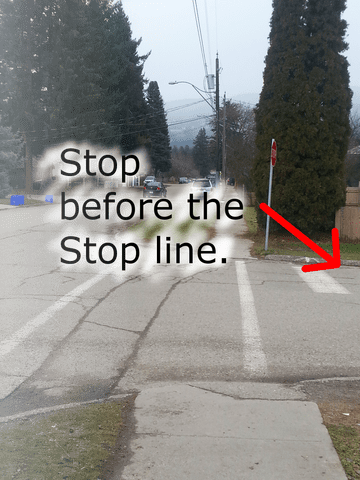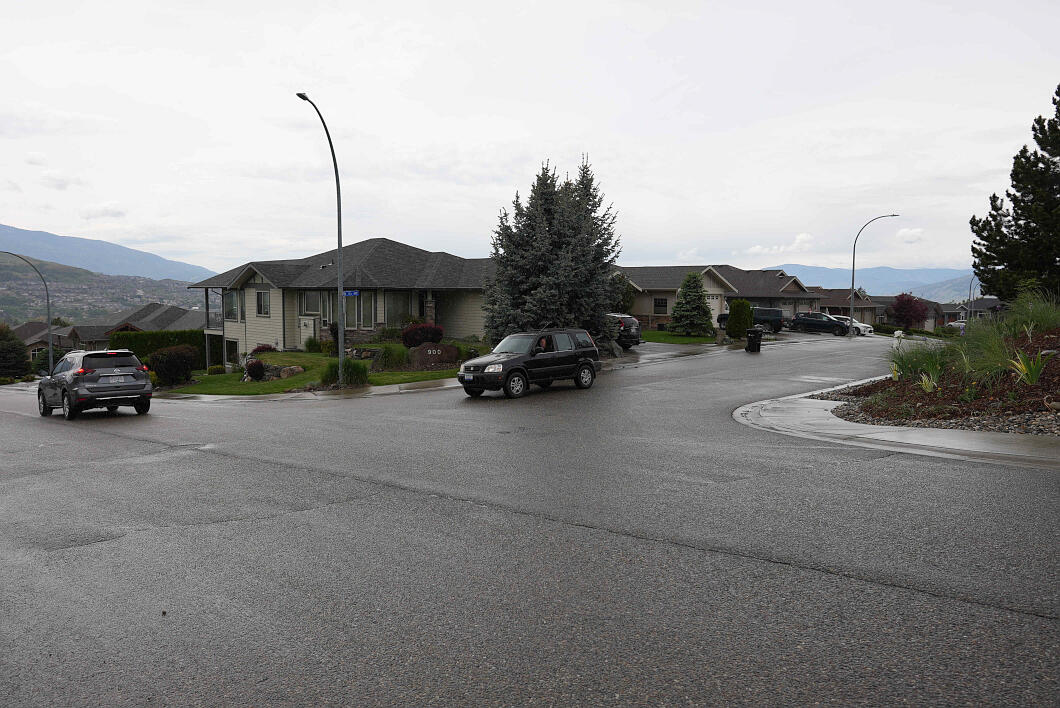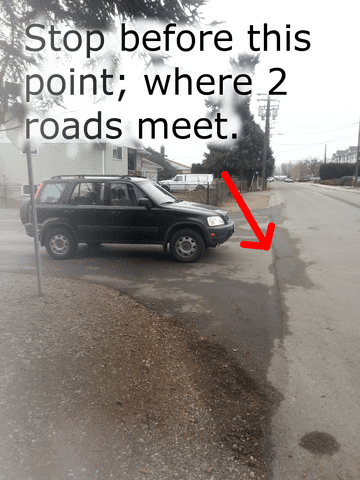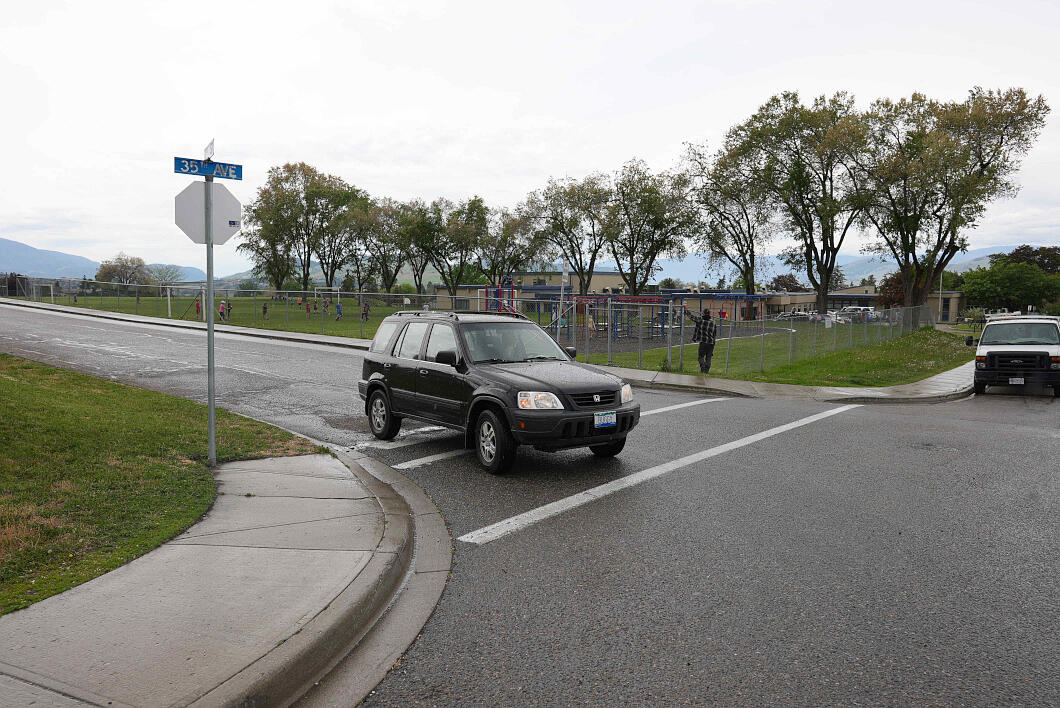There are 3 possible stopping positions at STOP Signs.
Pass a Driving Test | Stop Sign Stopping Positions
 The first stopping position at a STOP signed intersection is behind the STOP line. This is a thick white line across you lane.
The first stopping position at a STOP signed intersection is behind the STOP line. This is a thick white line across you lane.
Introduction
The stop sign for the purposes of a road test you need to stop at the correct position at a stop signed intersection.
There are three positions & will let you know what those are in a moment.
Hi there, welcome back, Rick talking today about the three stopping positions at stop signs that you need to know for the purposes of a road test.
1) The first stopping position is just before the stop line. The front tires must stop just before the stop line.
2) The second position is before the crosswalk. If there's no crosswalk painted on the roadway, than before the sidewalk.
3) And the third stopping position is at the edge where the two roads meet.
 Stop before the sidewalk if there aren't any road markings.
Stop before the sidewalk if there aren't any road markings.
The vehicle must come to a complete stop.
MYTH: some new drivers are misled to beleive that they have to stop for a length of time at the stop sign before proceeding.
For example they have to stop for 3 seconds.
NO. You just have to bring the vehicle to a complete stop.
 If there isn't a STOP line at a STOP sign, you must stop behind the crosswalk lines or before the sidewalk.
If there isn't a STOP line at a STOP sign, you must stop behind the crosswalk lines or before the sidewalk.
What is a Complete Stop at a STOP Sign?
Unlike the fact that most people at STOP signed intersections do not come to a complete stop; for the purposes of a road test, you must come to a complete stop.
The way that you can tell the vehicle is at a complete stop is that the body will settle back over the chassis of the vehicle when you come to a complete stop.
You'll feel it sort of set back because the vehicle is 2 pieces and as you brake the body moves forward of the chassis.
 If there isn't a STOP line, sidewalk or crosswalk lines, then stop at the edge where the two roads meet.
If there isn't a STOP line, sidewalk or crosswalk lines, then stop at the edge where the two roads meet.
When you come to a complete stop it'll settle back over the chassis.
That's how you know you come to a complete stop.
After Coming to a Complete Stop - Treat it as a Yield
If you stop at the correct position at the STOP signed intersection and you can't see oncoming traffic, stop in the correct position then treat it as a YIELD.
Move forward it to you can see and when the way is clear you can proceed.
 After coming to a complete stop at the correct stopping position, creep forward until you can see. When the way is clear, proceed.
After coming to a complete stop at the correct stopping position, creep forward until you can see. When the way is clear, proceed.
Conclusion
So the three stopping positions at a STOP signed intersection:
1) before the stop line just the front tires just before the stop line;
2) before the crosswalk lines if there's no crosswalk lines, before the sidewalk;
3) and finally before where the two roads meet.
If you can't see when you stop at the correct stopping position at the STOP signed intersection come to a complete stop at the correct stopping position and than treat it as YIELD.
Move forward into you until you can see and than proceed with the way is clear.
CLICK to Learn How to Pass A Road Test First Time


